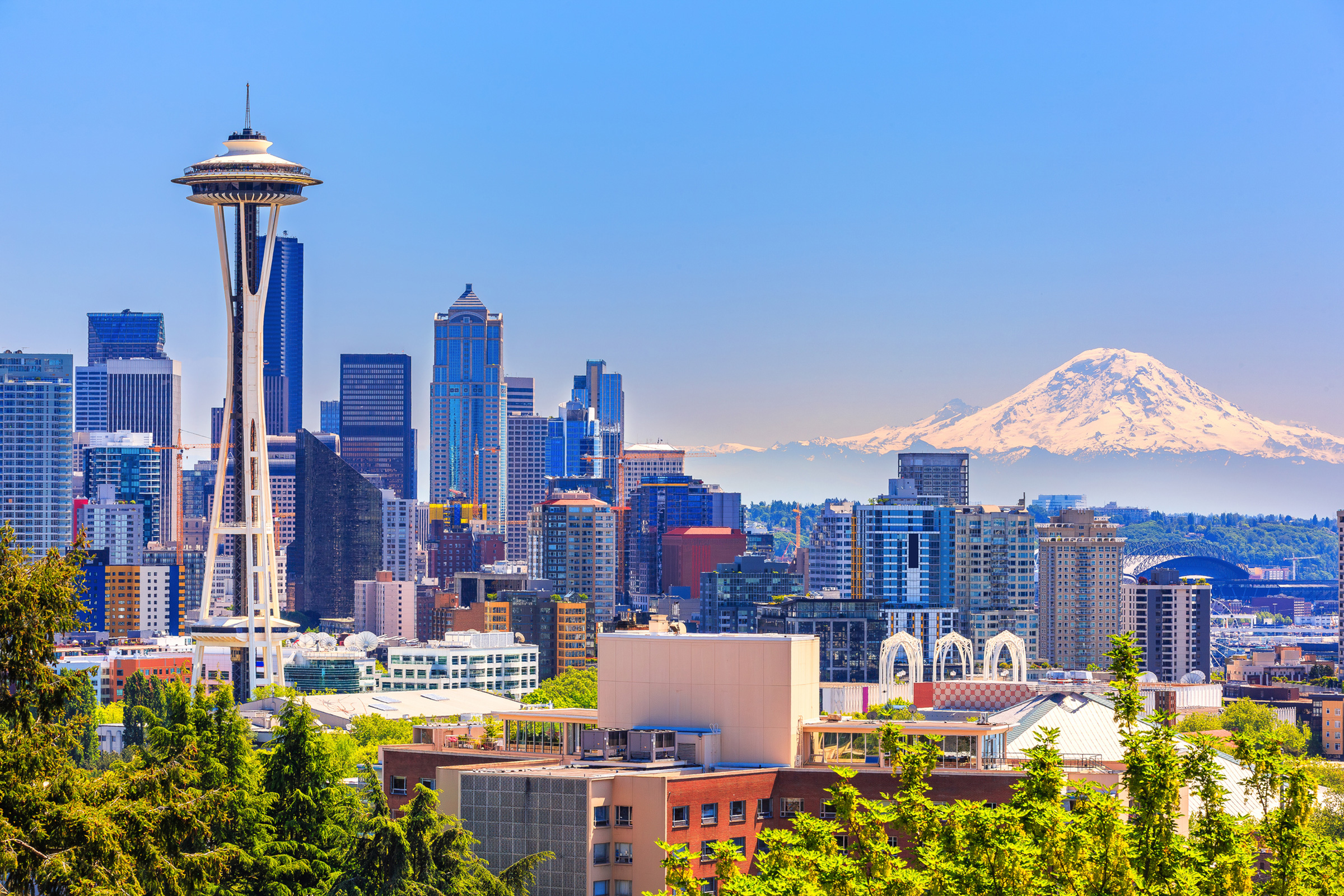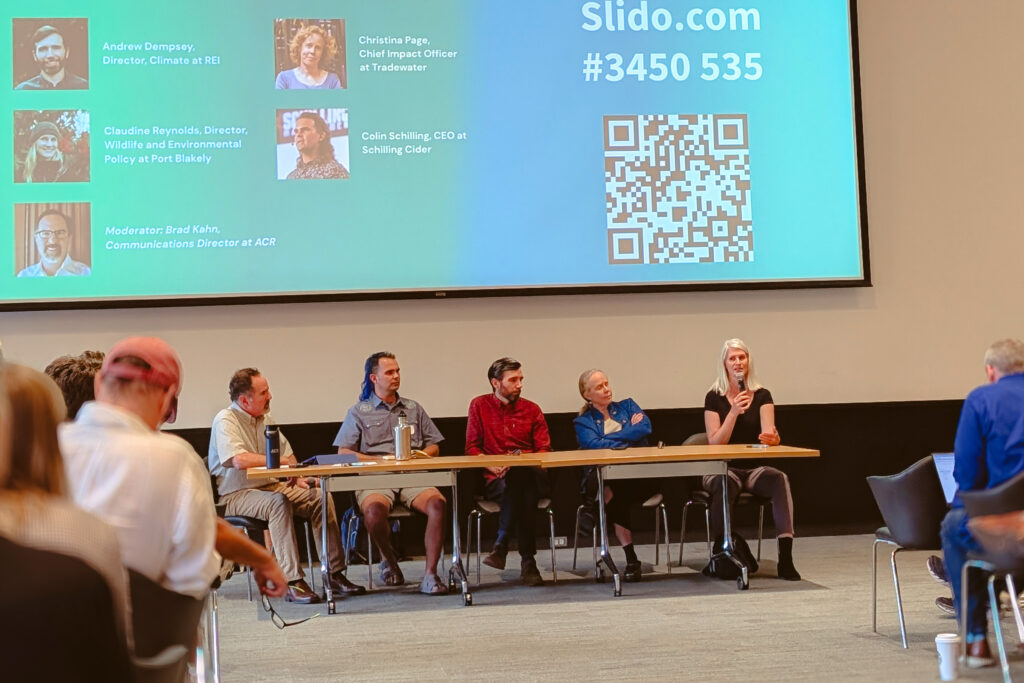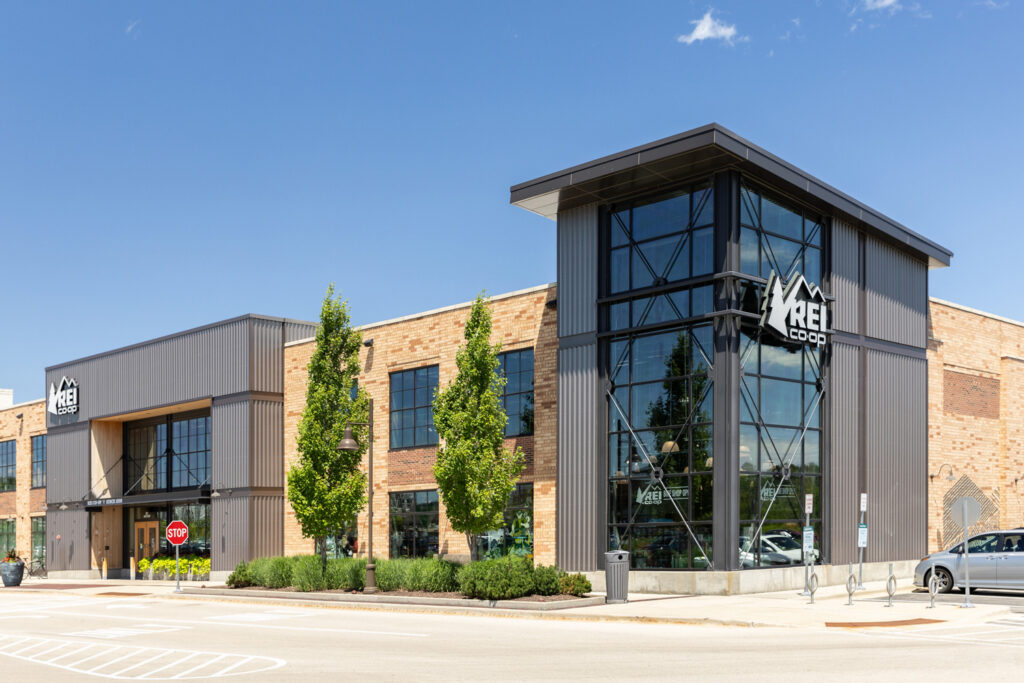
The Climate Q&A… with ACR’s Brad Kahn: How committed businesses are using carbon credits to generate ambitious climate results
Seattle-based Brad Kahn, communications director at ACR at Winrock International, has more than 25 years of communications experience related to climate change and forests. He is responsible for institutional and programmatic communications for ACR and supports its sister enterprise, Architecture for REDD+ Transactions (ART). Before joining ACR, Brad worked as a consultant to nonprofit organizations and foundations; he also served for 13 years as communications director for the Forest Stewardship Council US, engaging with companies, NGOs, forest managers and civil society to advance responsible forest management. Brad has a master’s degree in watershed systems and management from the Yale School of Forestry and Environmental Studies and a bachelor’s in economics from Brown University.
Brad recently organized and moderated a panel at Pacific Northwest Climate Week (held in his hometown) aimed at sharing how climate-committed companies – including both buyers and project developers – use carbon credits to make a positive impact, and how credits fit into their overall sustainability strategies. We caught up with him after the event and asked him to give us some of his top takeaways.

ACR has been a respected nonprofit operator in carbon markets for a long time; often the word “pioneering” is used to describe it. Before we get into PNW Climate Week, what is so unique about ACR, and why is it so trusted?
Founded in 1996 as the first private greenhouse gas registry in the world, ACR issued the first serialized carbon credits. Now, ACR has issued more than 340 million emission reductions and removals credits for use in compliance and voluntary carbon markets. ACR was among the first crediting programs to be approved by the International Civil Aviation Organization’s CORSIA, the world’s first global compliance carbon market, and ACR was approved by the state of California as meeting the rigorous regulatory requirements to serve as an Offset Project Registry, pioneering a new model for compliance offset markets.
ACR ensures carbon credit quality by developing science-based, peer-reviewed standards and methodologies, and by oversight of carbon project verification, registration and reporting of credits issued and retired through its transparent registry system. ACR has long pioneered science-based methodologies for activities that reduce and remove GHG emissions, built on the ACR Standard, which is rooted in sound science to ensure the credits issued are real, additional, permanent, free of leakage, independently verified and not double-counted.
2026 will be ACR’s 30th anniversary, so we look forward to celebrating our impact with partners – as well as remaining focused on the opportunities to continue making progress.
How did the plan for the carbon credits panel at Pacific Northwest Climate Week arise? Did you pitch it to organizers, or did they approach you — and what were the goals of the dialogue?
Pacific Northwest Climate Week is a volunteer-driven event. I was looking to get involved in local climate efforts, so I volunteered to organize a panel discussion, which was part of the broader “Carbon” track of sessions. Beyond a desire to volunteer, I was looking for opportunities to make the case to local business leaders that carbon credits should be part of their overall sustainability strategies. We have many corporate leaders in Seattle, but there are many more companies who are still waiting to see how carbon markets shake out. I wanted to help make the case that now is the time to get off the sidelines and to start buying credits.
Why do companies buy carbon credits?
While reasons vary and are unique to each company, some common themes include a desire to do the right thing, employee and customer expectations, and future-proofing a business.
I never discount the importance of corporate and leadership values. I constantly talk to business leaders who are driven to make a difference, within the construct of a profit-motivated organization. Today, most GHG emissions globally – approximately two-thirds of the total – are not regulated. That means action depends on companies taking voluntary action. So, it is critically important to identify and support leaders who are predisposed towards action.
Next, much of the current business case for voluntary action rests on the expectation of key stakeholders – employees and customers, in particular. There is a large and growing body of evidence that shows employees want to be part of an organization that is responsible, just and sustainable. Climate action checks those boxes. And customers – especially Gen X and Gen Z customers – gravitate towards sustainable businesses and products.
Finally, if you believe climate change is an existential problem that demands action, which most people do, then logically you also believe there will be additional regulation and customer expectations in the future. Starting to buy carbon credits now effectively puts a price on unabated carbon emissions, which drives internal discussions about how to reduce emissions further. These discussions can lead to innovation, which better prepares a company for the future.

Tell us a bit about the companies on the panel − and what, if anything, panelists shared about how they set their companies climate goals or overall sustainability direction?
Since my goal was to convince companies to start buying credits, I wanted corporate leaders as the panelists.
REI – short for Recreational Equipment, Inc. − is a well-known, beloved company based in Seattle, with a long history of environmental activism. They have a carefully crafted climate strategy, and as importantly, they report publicly on their progress and challenges. (In case anyone hasn’t heard of it, it’s a consumer-owned, cooperative outdoor recreation services and retail company. They sell a lot of high-quality outdoor apparel and gear, everything from tents and kayaks to mountain bikes and hiking shoes.)
While I like a cold cider, Schilling was not on my radar until I did some research in ACR’s registry, where I found that they had purchased and retired ACR credits. It turns out that Colin Schilling, the founder and CEO, is passionate about climate action. They are also a Seattle-based company, and were the first in the industry to move to cans over bottles, with dramatic reductions in emissions – since bottles are heavy to move across the country. They also have a carbon-neutral cider, which used ACR credits to address remaining emissions.
Tradewater is a project developer that destroys super-pollutants, such as methane and refrigerant gases, using ACR methodologies. It turns out they had sold credits to Schilling, plus their chief impact officer lives in Seattle. Super-pollutants are often overlooked, but destroying them offers us an “emergency brake” on climate change, buying us time to tackle more challenging issues.
Port Blakely is a 100+-year old forestry company based in Seattle. They have recently begun developing a forest carbon project. We are known for forests in the Pacific Northwest, so I wanted a forest management company to be involved in the discussion. As the climate changes and forest fires become more common, people may wonder how forests can be a natural climate solution. I wanted to make sure we had someone on the panel who could talk about the importance of forests to mitigate the worst impacts of climate change, and ways carbon projects can make forests more resilient.
What other kinds of companies are interested in buying carbon credits? Do you have an estimate of how many U.S.-based companies are buying into carbon markets? Are carbon markets heating up?
We are seeing a broad and diverse cross-section of companies buying credits. From financial services and business consultants to tech and consumer products businesses. Since much of the action is voluntary – outside of the California, Washington and CORSIA (for international aviation) compliance markets – it is hard to know the exact number of businesses buying credits.
Whether carbon markets are heating up is the billion (or trillion) dollar question. From ACR’s perspective, 2024 was a very strong year. We issued almost 45 million emission reduction and removal credits – 21 million from forestry projects and 24 million from industrial projects – which is an increase of nearly 20% from 2023. We are seeing broader trends that suggest growing confidence in carbon markets, with new companies entering for the first time. Generally speaking, we are cautiously optimistic.

What different types of carbon credits are available today and how do companies like those your panelists represent choose among them?
ACR manages diverse portfolio of carbon crediting methodologies, from nature-based solutions (afforestation and reforestation, active conservation and improved forest management) to destruction and reuse of super-pollutants (such as methane and refrigerant gases) and carbon capture and storage.
There are many ways to choose which credits to buy. For example, some companies want to buy credits from projects that are in their geographic region or perhaps associated with a key supply chain. Other companies look at co-benefits, such as human health, biodiversity or water quality. And others are interested in maximizing their near-term impact. Generally, it’s most important to focus on credits from a reputable crediting program to ensure quality, and to think in terms of a portfolio approach.
What do “good” credits look like?
High-quality carbon credits meet an array of criteria, including that they have been independently verified ex post (after the action has happened), beyond business as usual and net of leakage (impacts shifted elsewhere because of the project). ACR’s methodologies address these issues and more.
What kinds of questions did you and the panelists get?
We received a number of questions about making the business case for buying credits, so it was really valuable to have business leaders describing their own journeys. In reality, establishing a business case for an entirely voluntary action can be challenging. But the sentiment in the room seemed to focus on an understanding that credits represent an important arrow in the quiver of climate actions a company can take. We received more than 25 questions in the session, and spent most of the time addressing them, so I was really pleased by the level of audience engagement. Panelists were asked everything from how to get started buying credits to whether being climate neutral confers a competitive advantage.
What is ACR up to at NYC Climate Week this year – can you give us a preview?
Our Climate Week NYC plans are still taking shape, but ACR will be there looking to engage with stakeholders. In addition to participating in events and panel discussions, it’s important to represent carbon markets at big climate gatherings. We are in an “all of the above” moment on climate change, where we need everyone pushing together. So we find it valuable to connect in person with colleagues, both to strategize and to recharge our batteries.
Click here to read about Winrock’s engagement at Climate Week NYC last year; ACR and other Winrock representatives will be actively engaging in the upcoming 2025 Climate Week events. Look forward to seeing you there!
Related Projects

ACR
Winrock has long recognized the threat posed by climate change. ACR, founded in 1996 and operated by Winrock, is dedicated to the belief that markets are the most effective tools to tackle climate change. As such, ACR has developed transparent and science-based methodologies to incentivize carbon reductions in agriculture, transportation and other industries. ACR is also a partner in assuring that California’s landmark Cap-and-Trade Program can manage, verify and credit carbon offsets effectively.
